 From Moneyball author Michael Lewis' latest New York Times piece on Shane Battier, "The No-Stats All-Star."
From Moneyball author Michael Lewis' latest New York Times piece on Shane Battier, "The No-Stats All-Star."
Here we have a basketball mystery: a player is widely regarded inside the N.B.A. as, at best, a replaceable cog in a machine driven by superstars. And yet every team he has ever played on has acquired some magical ability to win.
. . .
The virus that infected professional baseball in the 1990s, the use of statistics to find new and better ways to value players and strategies, has found its way into every major sport. Not just basketball and football, but also soccer and cricket and rugby and, for all I know, snooker and darts — each one now supports a subculture of smart people who view it not just as a game to be played but as a problem to be solved. Outcomes that seem, after the fact, all but inevitable — of course LeBron James hit that buzzer beater, of course the Pittsburgh Steelers won the Super Bowl — are instead treated as a set of probabilities, even after the fact. The games are games of odds. Like professional card counters, the modern thinkers want to play the odds as efficiently as they can; but of course to play the odds efficiently they must first know the odds. Hence the new statistics, and the quest to acquire new data, and the intense interest in measuring the impact of every little thing a player does on his team’s chances of winning. In its spirit of inquiry, this subculture inside professional basketball is no different from the subculture inside baseball or football or darts. The difference in basketball is that it happens to be the sport that is most like life.
. . .Alexander wasn’t alone. It was, and is, far easier to spot what Battier doesn’t do than what he does. His conventional statistics are unremarkable: he doesn’t score many points, snag many rebounds, block many shots, steal many balls or dish out many assists. On top of that, it is easy to see what he can never do: what points he scores tend to come from jump shots taken immediately after receiving a pass. “That’s the telltale sign of someone who can’t ramp up his offense,” Morey says. “Because you can guard that shot with one player. And until you can’t guard someone with one player, you really haven’t created an offensive situation. Shane can’t create an offensive situation. He needs to be open.” For fun, Morey shows me video of a few rare instances of Battier scoring when he hasn’t exactly been open. Some large percentage of them came when he was being guarded by an inferior defender — whereupon Battier backed him down and tossed in a left jump-hook. “This is probably, to be honest with you, his only offensive move,” Morey says. “But look, see how he pump fakes.” Battier indeed pump faked, several times, before he shot over a defender. “He does that because he’s worried about his shot being blocked.” Battier’s weaknesses arise from physical limitations. Or, as Morey puts it, “He can’t dribble, he’s slow and hasn’t got much body control.”
Battier’s game is a weird combination of obvious weaknesses and nearly invisible strengths. When he is on the court, his teammates get better, often a lot better, and his opponents get worse — often a lot worse. He may not grab huge numbers of rebounds, but he has an uncanny ability to improve his teammates’ rebounding. He doesn’t shoot much, but when he does, he takes only the most efficient shots. He also has a knack for getting the ball to teammates who are in a position to do the same, and he commits few turnovers. On defense, although he routinely guards the N.B.A.’s most prolific scorers, he significantly reduces their shooting percentages. At the same time he somehow improves the defensive efficiency of his teammates — probably, Morey surmises, by helping them out in all sorts of subtle ways. “I call him Lego,” Morey says. “When he’s on the court, all the pieces start to fit together. And everything that leads to winning that you can get to through intellect instead of innate ability, Shane excels in. I’ll bet he’s in the hundredth percentile of every category.”
There are other things Morey has noticed too, but declines to discuss as there is right now in pro basketball real value to new information, and the Rockets feel they have some. What he will say, however, is that the big challenge on any basketball court is to measure the right things. The five players on any basketball team are far more than the sum of their parts; the Rockets devote a lot of energy to untangling subtle interactions among the team’s elements. To get at this they need something that basketball hasn’t historically supplied: meaningful statistics. For most of its history basketball has measured not so much what is important as what is easy to measure — points, rebounds, assists, steals, blocked shots — and these measurements have warped perceptions of the game. (“Someone created the box score,” Morey says, “and he should be shot.”) How many points a player scores, for example, is no true indication of how much he has helped his team. Another example: if you want to know a player’s value as a rebounder, you need to know not whether he got a rebound but the likelihood of the team getting the rebound when a missed shot enters that player’s zone.
There is a tension, peculiar to basketball, between the interests of the team and the interests of the individual. The game continually tempts the people who play it to do things that are not in the interest of the group. On the baseball field, it would be hard for a player to sacrifice his team’s interest for his own. Baseball is an individual sport masquerading as a team one: by doing what’s best for himself, the player nearly always also does what is best for his team. “There is no way to selfishly get across home plate,” as Morey puts it. “If instead of there being a lineup, I could muscle my way to the plate and hit every single time and damage the efficiency of the team — that would be the analogy. Manny Ramirez can’t take at-bats away from David Ortiz. We had a point guard in Boston who refused to pass the ball to a certain guy.” In football the coach has so much control over who gets the ball that selfishness winds up being self-defeating. The players most famous for being selfish — the Dallas Cowboys’ wide receiver Terrell Owens, for instance — are usually not so much selfish as attention seeking. Their sins tend to occur off the field.
It is in basketball where the problems are most likely to be in the game — where the player, in his play, faces choices between maximizing his own perceived self-interest and winning. The choices are sufficiently complex that there is a fair chance he doesn’t fully grasp that he is making them.
Tags: Michael Lewis, Shane Battier, The No-Stats All-Star, The New Journalism




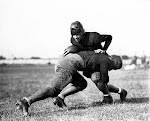
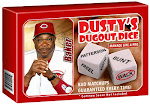
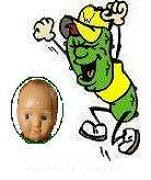





.jpg)



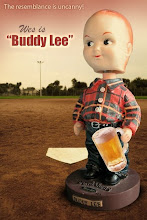
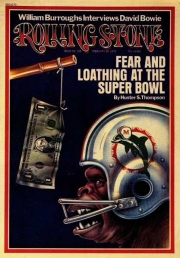

No comments:
Post a Comment